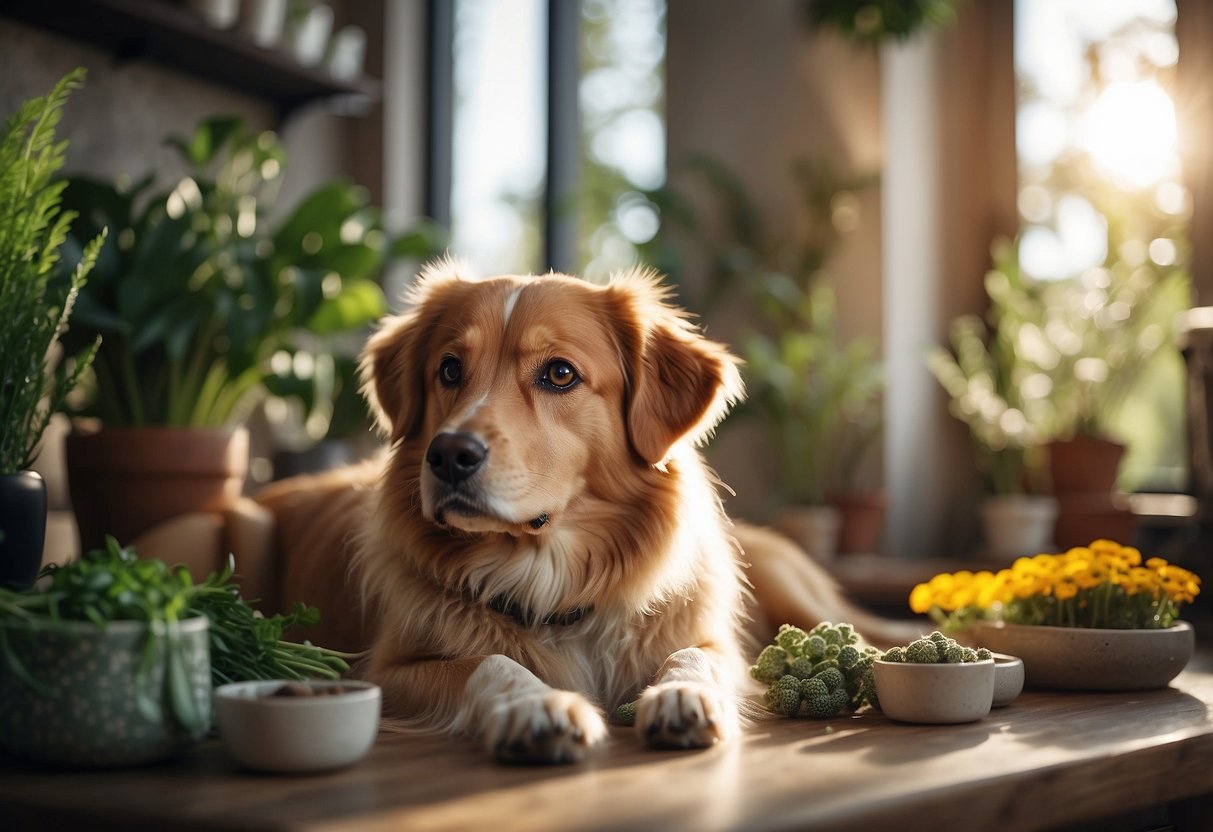
Acupressure Techniques for Home Use
Acupressure uses finger pressure on the same points targeted in acupuncture. It can be done at home and is a non-invasive way to promote healing and relaxation in pets. Techniques include gentle pressing, circular motions, and tapping.
Owners can learn basic acupressure methods from a trained practitioner. Common points for acupressure include those that help alleviate anxiety, reduce inflammation, and support digestion.
Regular sessions help maintain health and can be a good complement to veterinary care. Observation of the pet’s response is crucial to ensure that the pressure applied is comfortable and beneficial.
Physical Therapies

Physical therapies for pets can greatly enhance their quality of life by alleviating pain, improving mobility, and promoting overall wellness. These therapies include techniques such as massage, physical rehabilitation, and chiropractic care.
Massage and Physical Rehabilitation
Massage therapy for pets helps to relax muscles, improve circulation, and reduce pain. Skilled practitioners use techniques like kneading, rolling, and gentle stretching. This therapy can be particularly beneficial for older pets, those recovering from surgery, and animals suffering from conditions like arthritis.
Physical rehabilitation involves structured exercises aimed at improving strength, balance, and range of motion. Pets may perform activities on balance boards, treadmills, or through hydrotherapy sessions. These treatments are especially useful for pets recovering from injuries or surgeries and can be tailored to individual needs.
Chiropractic Care for Pets
Chiropractic care involves the manual adjustment of the spine and other joints to correct misalignments and improve function. This type of therapy can alleviate pain, enhance mobility, and support the nervous system.
Animals with back or neck pain, hip dysplasia, or chronic conditions like arthritis may benefit from chiropractic adjustments. Treatments typically involve gentle, hands-on manipulations guided by a comprehensive understanding of animal anatomy. Regular sessions can maintain spinal health and prevent future issues, offering a non-invasive approach to long-term wellness.
Aromatherapy and Essential Oils
Aromatherapy can benefit pets by helping alleviate anxiety and improving their emotional well-being. Selecting high-quality oils and ensuring safe applications are crucial to avoid harming your pet.
Safe Application of Essential Oils
Essential oils must be used with caution to ensure the safety of pets. Direct application on the skin can be harmful, so it’s recommended to dilute oils with a carrier oil. Diffusing essential oils in a well-ventilated area can also provide therapeutic benefits without direct contact. Not all oils are safe for pets; avoid using tea tree, pennyroyal, and wintergreen oils.
Observing your pet’s reaction after the initial use is vital. Signs of distress, such as excessive drooling, vomiting, or lethargy, indicate that the oil is not suitable. Always consult a veterinarian before introducing essential oils to your pet’s routine.
Selecting Quality Oils for Your Pet
The quality of essential oils plays a significant role in their effectiveness and safety. Look for oils that are 100% pure, without additives or synthetic ingredients. Organic certifications can provide additional assurance of quality.
Reliable brands will often provide detailed information about the oil’s origin and extraction methods. Avoid purchasing essential oils from questionable sources as they might contain harmful contaminants. Ensuring the products are of therapeutic grade can maximize the potential benefits of aromatherapy for pets.



